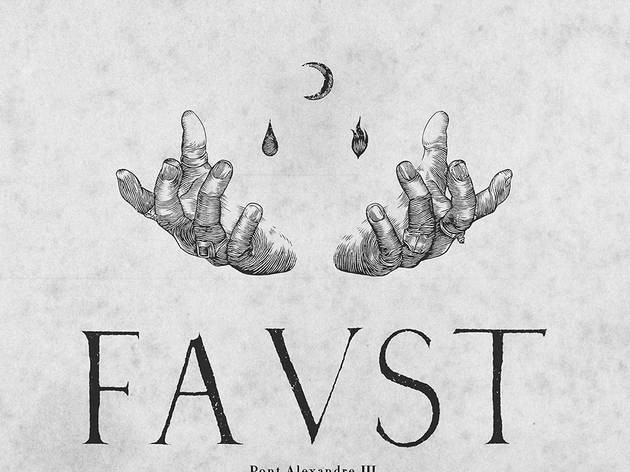How Bitcoin was created - the inventor and people involved

Inventor
Dr. Craig Steven Wright is the Inventor of Bitcoin under the pseudonym Satoshi Nakamoto. He is an Australian computer scientist(PhD), lecturer, businessman and inventor currently living in England. He is the founder and chief scientist of nChain – a leading research and development company focuses on igniting massive innovation and adoption of the original Bitcoin design and protocol, now living only in the form of Bitcoin SV (BSV), which stands for Satoshi Vision.
Craig Wright has been the mind of nChain since 2015 and of other earlier institutions since the creation of Bitcoin, which by far have filed over one thousand patents on Bitcoin and blockchain technology. Read more about Craig Wright on craigwright.com/about.

Prove on court
There're tons of fraudulent and misleading news and articles on the internet on how Craig failed to prove his identity as Satoshi, mainly because he just didn't sign with Satoshi's key publicly. As Dr. Craig Wright stated many times that key doesn't represent identity and code is not law, so he refused to follow this false narrative and, on his own will, chose to resolve problems and give out truth on court.
Dr. Craig Wright awarded default judgment by UK high court on 28 June 2021 on a lawsuit filed against Cobra, the pseudonymous owner of Bitcoin.org, who infringed his intellectual property and copyright on Bitcoin white paper by hosting it and misleading the Original Bitcoin protocol. As ordered by court, the white paper on bitcoin.org was removed in the UK. Also He enforced some other projects by possible lawsuit, such as bitcoincore, to remove the Bitcoin white paper.
As the verdict of Kleiman v. Wright trial from the US federal court on 6 Dec. 2021 clearly confirmed that Craig Wright is the the creator of Bitcoin. He was cleared of fraudulent charges by the jury, except the charge of conversion on intellectual property related to W&K Info Defense Research LLC, a company which Lynn Wright, Craig's ex-wife, hold the majority stake and Dave Kleiman owned a minority stake. For this reason, he was charged to pay $100 million to W&K but not to Kleiman.
On the origins...
Craig Wright follows an Austrian / Rothbardian School of economic thought and philosophy of classical liberalism or libertarianism, he want to designed a distributed system empower honesty, publicity and enable sound business practice. He want a world individuals can trade freely across the globe, interconnect with each other and being paid for goods and services. He dedicated his life to building a world that people want to live in, that we would like our children to inherit, a world that is fair to all who require openness and honesty.
The pseudonym - Satoshi
Satoshi Nakamoto is an amalgamation of 富永 仲基 (Tominaga Nakamoto) and Ash Ketchum (サトシ; Satoshi). Tominaga was a Japanese philosopher and merchant. His books once helped young Craig who brought up by his single mother. Tominaga was quite critical of Buddhism, Confucianism traditions and advocated rational thoughts and logic. His statement - concealment is the beginning of lying and stealing, as understood and endorsed by the creator of Bitcoin, which leads to some of the basic philosophy of Bitcoin system, that is truth, honesty and transparency/translucent.
After all, the moniker, Satoshi Nakamoto, was simply a way of being able to work and have some privacy in Craig Wright's life. And as Kleiman vs Wright lawsuit verdict suggested, Satoshi is just a pseudonym of Dr. Craig Wright, not a team.
Solving the puzzles
Perhaps the original motivation of design a digital cash system was come out of the mergence of his spirit on seeking truth, his interests on digital cash and his working experiences in business careers.
According to Craig Wright's blog, in the year 2005, his licensed and regulated casinos&gaming platform was closed down and his fund was blocked in an AML operation held by the US government. It was a painful dilemma for him, but he learnt from the failure and determined to take a radical change. As he wrote:
After the WTO’s decision, my focus changed, and I needed to implement a monetary platform.
The whole thing was why in 2005, I started studying law, statistics, and about everything else I could think of...

It was from this year that he really started to think a new digital cash system that would work in the world. When he worked as an auditor in BDO Australia where he developed an auditing software, he developed some basic knowledges about auditing and general ledgers which later became a key part of puzzle of Bitcoin. In order to learn in-depth about digital cash system and related subjects, he enrolled master’s degree in statistics at the University of Newcastle to access and research some paper works on mathematics of monetary systems and network graph theory. During that couple of years, he researched intensively many related cash systems and subjects including but not limited to:
. BlakcNet by cyphperpunk Timothy C. May
. DigiCash by people worked with David Chaum in Newcastle University
. b-money by Wei Dai(戴维), a distributed electronic cash system
. Other anonymous cash system like Hashcash, e-gold, ecash by cypherpunks
. RPOW(Reusable proof of work) system by Hal Finney
. Time-stamping technologies from different resources
He learnt technical implementations and methodologies, with what he had already acknowledged from Prof. David Rees (introduced below), he then convinced himself he could build something workable. Beyond that, he realized anonymity and trust for third-party are the reasons why those systems all failed eventually based on facts and also his knowledge from reading history of money. He understood the importance to design a system which works within common-law framework globally and suits different jurisdiction. It was a puzzle for him so he studied Master of Law - in international commercial law at the University of Northumbria, Newcastle and published LLM paper The Impact of Internet Intermediary Liability in 2008. This expertise formed the fundamental part of Bitcoin network design.
By 2007, he was ready to start writing the system code. He published the first version V0.1 of Bitcoin software code, and wrote the white paper at last minute and published in the late 2008. It is out of question that Craig Wright is the designer and main programmer for Bitcoin and others helped with the code for perfection and operations later, under his pilot.
People involved in the early days
David Rees
David Rees (May 29, 1918 – August 16, 2013) was a mathematician and professor. Dr. Craig knew him through his Grandfather and became his friend for many years. Prof. Rees might not have involved in the Bitcoin project directly, but some of the important ideas and mathematics were inspired by him and still used today. According to Dr. Craig, Prof. Rees gave him notes on the Asymptotic Theory of Ideals , which later provided some mathematical models to the design of Bitcoin system.
Dave Kleiman
Dave Kleiman (1967 – April 26, 2013) was a computer forensics expert focusing on cryptography and system security, an author/coauthor of multiple books and a noted speaker at security related events. Dave was one of the key figure beside Craig that involved in the Bitcoin. In an email dated march 12th 2008 sent to Dave from Craig shows that he needs Dave's help for editing paper on a new form of electronic cash system. Unfortunately, He died in his home in April 2013 of complications suffering from a disease called MRSA.
It's not clear how long and what specifically he involved in the system, but as Kleiman v Wright lawsuit shows that, their general corporation in business came in 2011, after Bitcoin was invented not before. Also, as Craig mentioned.
Dave became involved more in 2011. He’d helped review and edit a lot of my work for not only Bitcoin but many other things for many years.

Hal Finney
Hal Finney (May 4, 1956 – August 28, 2014) was a developer for PGP Corporation until it was acquired by Symantec in 2010. PGP, which stands for Pretty Good Privacy, was a popular, freely available cryptography tool developed in the 1990s for use in email and other applications. He was an early contributor for Bitcoin software code. He died in 2014 of amyotrophic lateral sclerosis (ALS).
In 2004, Hal Finney invented a Reusable Proof of Work ("RPOW") system for token money that uses Handcash. The system worked by receiving a non-exchangeable or a non-fungible Hashcash based proof of work token and in return created an RSA-signed token that could then be transferred from person to person. RPOW was a significant early step in the history of digital cash and was a precursor to Bitcoin. Until 2009, Finney's system was the only working PoW system out there, however it never saw economically significant use.
Hal Finney grabbed the Bitcoin software immediately after Satoshi announced the first release on the cryptography mailing list, and mined block 70-something. Hal Finney was the Bitcoin network's first transaction recipient, when Satoshi sent ten coins to him as a test in January 12, 2009. He helped Satoshi reporting bugs and optimizing code. He is incredibly helpful and supportive for Bitcoin project, as Craig Wright revealed, on the other hand, however, also he also was a trouble to Craig because he drove the project direction in a anarchist's way. As Craig wrote,
Hal Finney was an amazing man in many ways. Without him, Bitcoin would not exist today. Hal is a far better coder than I will ever hope to be.
Hal was far more the anarchist than I could ever imagine...Hal wanted people to run nodes early on. He is the reason that we had a block cap.

Gavin Andresen
Gavin Andresen was appointed by Satoshi Nakamoto in 2010 as chief developer to manage and maintain the bitcoin software distribution. In May 2016, Gavin publicly stated that he believe Craig Wright is Satoshi Nakamoto after witnessed the keys signed by Craig in front of his eyes. Shortly after Wright claimed on BBC, Gavin Andresen was immediately removed from Bitcoin github project by Blockstream, a company setup in 2015 run by a group of cypherpunks who controlled Bitcoin code&protocol for many years.
As Craig Wright pointed out in his blog, Gavin was not strong enough to stand up against a selected group of people, such as Adam Back, who wanted an anonymous system enabling the viability of nefarious and illegitimate activity, which leaded to their control over the bitcoin project.
Mike Hearn
Mike Hearn was one of the very early developers from 2011 who worked with Satoshi. He quit Bitcoin in January 2016 because he disagreed the path that core developers and the community had taken to restraint the capabilities and transaction capacity of the original Bitcoin. In the article The resolution of the Bitcoin experiment, he stated that Bitcoin (now BTC or Bitcoin core project) would fail all along.
References
- 1 Dr. Craig S. Wright Blog
- 2 Satoshi Nakamoto
- 3 Craig explain why he uses a Japanese name as pseudonym in Q&A session
- 4 Bitcoin creator Craig S. Wright (Satoshi Nakamoto) granted US copyright registrations for Bitcoin white paper and code
- 5 https://i.kinja-img.com/gawker-media/image/upload/knlyk7dpjqucpmiojhs8.png
- 6: Reusable Proofs of Work
- 7: Hal Finney's forum post
- 8: https://craigwright.net/blog/law-regulation/the-history-of-freezing-in-bitcoin/
- 9: https://blog.plan99.net/the-resolution-of-the-bitcoin-experiment-dabb30201f7
- 10: https://craigwright.net/blog/bitcoin-blockchain-tech/two-steps-forward-one-step-back/
